#star trek: operation enterprise
Explore tagged Tumblr posts
Text
Star Trek: Operation Enterprise appreciation post because it smashes together my two hyperfixations but it’s ALL THE WAY IN GERMANY 💔💔💔
Opened 2017 in Movie Park Germany … stats under the cut xoxo





Stats (Courtesy of RCDB):
Length 2,362.2 ft
Speed 55.9 mph
Inversions 3
Elements:
LSM Launch (multi-pass)
131.3 ft tall 180.0° Twisted Vertical Rollback
98.4 ft tall Top Hat - Outside
Immelmann
Heartline Roll
100.0° Over-Banked Curve
270.0° Helix
Zero-G Roll
#I WILL SELL MY KIDNEY TO RIDE THIS.#NOT JOKING.#star trek#star trek: operation enterprise#roller coasters#coasterblr#coaster enthusiast#star trek tng
5 notes
·
View notes
Note
Star Trek Operation Enterprise - Movie Park Germany

#rollercoaster polls#rollercoaster#theme park#star trek: operation enterprise#movie park germany#polls
1 note
·
View note
Text
youtube
Star Trek VI: The Undiscovered Country Deleted Scene "Operation Retrieve" feat. Rene Auberjonois as Colonel West
#Not my ass finding out last year they named him Colonel West bc of Oliver North 😂😂😂#anyhoo they should have kept it in every edition#the 4k versions kept it but not the blurays#the directors cut of the dvd had it#Also with a ran of Colonel - which in Starfleet we hadn't encountered before - I wonder if that's been retconned to MACO thing.#maybe a leftover from the enterprise era and we're still integrating them#also always gotta point out this is happening in Ten Forward#Star Trek VI#Star Trek VI The Undiscovered Country#TUC#Colonel West#Rene Auberjonois#deleted scenes#Operation Retrieve#Odo#DS9#Youtube
12 notes
·
View notes
Text
the Section 31 Malcolm thing would've been far more compelling if it happened earlier in the series and if it had literally any build up to it. doing it so late in the series with nothing leading up to it makes it feel like a cop out to try to get me to care about Malcolm more, especially since he's barely been relevant for most of s3 - s4
#star trek: enterprise#malcolm reed#that said very interesting to see that Section 31 existed this early in Starfleet#it hasn't been officially called Section 31 in the episode but I know its meant to be them#I do like that choice to establish them here and give them such a long legacy#knowing they still exist and operate 200+ years into the future#but having Malcolm be part of it... meh#I liked Malcolm a lot in s1 - s2 but he hasn't really gotten much attention s3 - s4#so this doesnt compel me as much as it would've earlier in the series
5 notes
·
View notes
Text
Happy National Rollercoaster Day! Time for one of my favourite shots.

Almost four years since I did this shot of Star Trek: Operation Enterprise at Movie Park Germany. And its still one of my favourites ever. It was even reposted at the parks Instagram.
#Star Trek Operation Enterprise#Movie Park Germany#Mack Rides#coasters of tumblr#themeparkphotography#star trek
2 notes
·
View notes
Text

not this man pulling out a tricorder in order to identify what animal the LARGE PAW PRINT ON THE MOUNTAIN could belong to smh
#they made it seem like he & girlie are seasoned climbers. predator markers are basic knowhow for outdoor sports enthusiasts#need a goddamn tricorder........ ridiculous!#star trek enterprise#dani talks about tv#'yeah i fucking know its a mountain lion johnathon it is a extremely obvious & recognizable track'#maybe go back to whining about how sad killing iraqis made yo- i mean#how aliens are actually pretty scary after all and its reasonable to prioritize military positions over a mission of peace and co-operation#will he process this? well why do that when he can just get a new love interest bc the love of a woman is all a man needs to heal or whatev
1 note
·
View note
Text
youtube
THE PILE PRESENTS: AOTS! - Greetings from TROMAville | 4/19/05
Throw down the drop cloths!
(4GTV - STREAM WHAT YOU PLAY!)
DONATE AND KEEP 4GTV ON THE AIR - http://bit.ly/4GTVDonate | http://streamelements.com/grupstra0/tip
#The Pile#G4#Attack of the Show!#Star Wars#iPod#XXX (film)#What the Bleep Do We Know?#Dig!#Melvin Goes to Dinner#Trivial Pursuit#Sin City#eBay#TROMA#The Toxic Avenger#Adobe#Disney#Star Trek: Enterprise#Joint Operations: Typhoon Rising#Super Mario 64#Google#Electroplankton#Yoshi Touch and Go#Kirby Canvas Curse
1 note
·
View note
Text
Actually my concept for a Star Trek series would be something like:
It's 10,000 years in the future (or some big number, it's kind of arbitrary. It's a hell of a long time after anything we've seen, anyways)
The Federation and the Borg have long-since merged into a galaxy-spanning hyper civilization
Most sentient life in the galaxy is connected in a sort of utopian hivemind, but you can opt out. There are entire worlds that are just like...wilderness preserves for weird "throwback" types who value their individuality, unique cultures, etc.
The Civilization basically has a sort of collective midlife crisis and decides that it's stagnated; it hasn't really changed its technology or modes of living in thousands of years and it decides that cultural stasis is a sort of death (there's probably some kind of event to touch this off in the pilot)
Their solution is that they need to start exploring again to encounter new ideas, but all of the other galaxies are damn far away
But the Federation-Borg (Forg?) can't really operate over those distances, because they're out of direct contact with the rest of the hive and their units find this existentially terrifying
So they need to recruit a bunch of people from these weird throwback planets to go out and explore for them in a fleet (or in one really big ship with a bunch of, like, Enterprise-sized support craft)
Except these people have tensions because they all come from different sorts of cultural perserves. And some of them don't even think that they *should* be helping the Forg expand
The entire first season just shows their long, long journey through intergalactic space toward the Andromeda galaxy with just a few rare pit stops at isolated star systems all alone in the void
(Maybe, like...a haunted starship that has been floating in the night for half a billion years or something)
All of the aliens that they encounter are really weird and gnarly because this is outside the galaxy, so there should be no humanoids
They eventually get caught up in a bunch of shenanigans between rival gods and the like.
1K notes
·
View notes
Text
Someone posted this in a Trek group:

Counter theory:
"My theory was always that Spock was the unhinged and wild one -- a rebel by Vulcan standards -- and he radicalized "stack of book with legs" Jim Kirk.😂
Spock was the one out there mind melding with every Horta, Nomad and V'Ger while Jim and Bones absolutely panicked in the background.

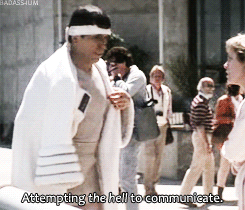
Then Jim usually ended up being the one to get Spock out of it, too. The Apple, Operation Annihilate, A Private Little War, The Infinite Vulcan, TMP . . . How many times did we see Kirk have to carry Spock body and limb and slightly on fire back to the ship after he got into it?

The amount of shit Jim has to do for Spock in Star Trek III alone.
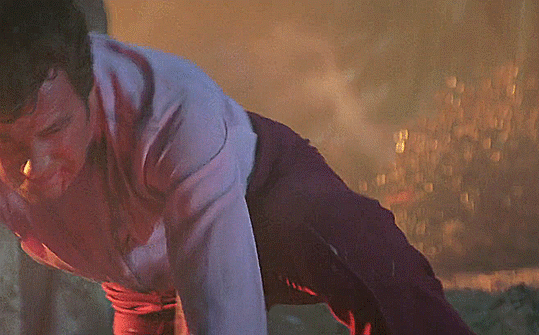
Spock is like the Enterprise housecat who stubbornly insists on being an outdoor cat and keeps escaping, later having to be carried back indoors. He keeps causing mischief but everybody loves his ass anyway.
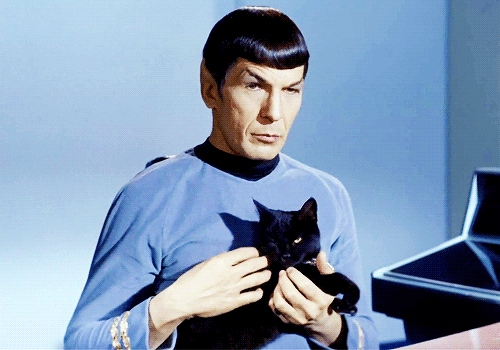
Kirk and Spock were chaotic messes who loved their frontier first contact work in TOS and onward -- they deserved each other.😂👌
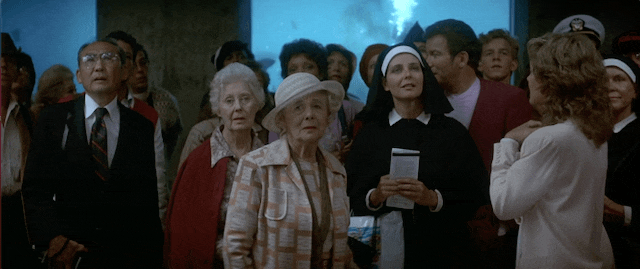
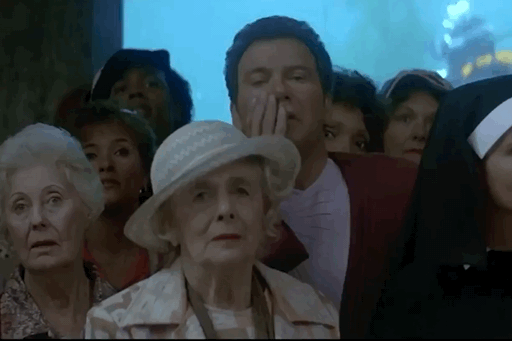
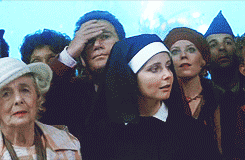
Shit, cat got out again.

#unhinged spock radicalized stack of books with legs jim kirk#dont get it twisted#spock is a menace#poor Jim just tryna work here#Spock had to go and start Mutiny Mondays with Scotty#star trek#spirk#spock#tos#star trek tos#kirk/spock#kirk#kirkxspock#kirk x spock#jim kirk#james t. kirk#mr.spock#snw#strange new worlds#oc#octrekmemes#1shirt2shirtredshirtdeadshirt#star trek funny#star trek memes#Spock is such a housecat tryna be an alley cat#captain kirk#mr. spock#character analysis
2K notes
·
View notes
Text










STAR TREK: ENTERPRISE // S4E17 Bound Yes, Captain, you've been operating under a misconception. It is the men who are the slaves, not the women.
#trekedit#star trek#star trek enterprise#jonathan archer#malcolm reed#charles trip tucker iii#phlox#t'pol#hoshi sato#travis mayweather#star trek*#ent*#ent 4x17#archer*#reed*#trip*#phlox*#t'pol*#hoshi*#mayweather*#scott bakula#dominic keating#connor trinneer#john billingsley#jolene blalock#linda park#anthony montgomery#my gifs
177 notes
·
View notes
Text
Star Trek TOS crew biographies
There are plenty of detailed biographies of the TOS crew, both online and in reference books. But I wanted to check what actually appears in the Original Series and the six TOS movies about this subject (that is, not counting secondary sources or later series). And the result is... very little, actually. I was surprised by the amount of data that I took for granted, just to find out it came from a novel or wasn't 100% set in stone. This is what I could find about each major character, just judging from the TOS series and movies. Feel free to add to this or correct mistakes.
James Tiberius Kirk:
Although in the series he's referred just as James T. Kirk, his middle name "Tiberius" appears in Star Trek VI. "Tiberius" was also his middle name in TAS episode Bem, and the novel The Galactic Whirlpool (both by Gerrold), as well as in Roddenberry's TMP novelization. So yeah, no doubts about his name.
He was born in Iowa (Star Trek IV) and had one brother, George Samuel Kirk, and three nephews (What are little girls made of?). Sam married a woman named Aurelan (Operation: Annihilate).
Kirk was 34 in The Deadly Years. Assuming each season is a year of the five year mission, he could be 33 at the start of the series. And this is the only reference for his age I could find. As for actual dates, I didn't find anything, except his statement in Star Trek IV that he comes from the late 23rd century. (It wouldn't be until Voyager episode Q2, that a date was given for the end of the five-year mission: 2270. This follows Michael Okuda's Star Trek Chronology, and all other dates for TOS are inferred from this).
At age 13 he witnessed the massacre of Tarsus IV (Kodos was governor twenty years ago, in The Conscience of the King).
At age 18 he had just entered the Academy and was tormented by Finnegan. At this time he also met Ruth (fifteen years before Shore Leave).
He served in the USS Republic as an ensign, at some unspecified time after his Academy years, where he reported Ben Finney for negligency (Court Martial).
At age 21 he visited the planet Neural and befriended Tyree (thirteen years before A private little war).
He teached at the Academy as a lieutenant. One of his students was his friend Gary Mitchell (Where No Man has Gone Before).
He was a lieutenant in the USS Farragut at age 23 (eleven years before Obsession), where he first encountered the cloud creature that massacred his crewmates.
Kirk had a relationship with Areel Shaw when he was 29 (four years before Court Martial).
He became captain of the USS Enterprise after Pike. If we suppose TOS first season happens during the first year of the five-year mission, Kirk was around 37 at the end of this mission.
There's a big gap of fifteen years between Space Seed and the second movie. And apart from the five-year mission, most of those years are unaccounted for. Kirk's been an admiral for two years and a half at the start of TMP. But we don't know if he became an admiral right after the Enterprise's mission, or much later. That is, we don't know at what point of that gap take place the events of TMP. Around this time, both Spock and McCoy had retired from Starfleet, though they both returned when Kirk took the Enterprise again for the V'Ger incident.
By The Wrath of Kahn, Kirk should be 48 years old (fifteen years since he left Kahn stranded in Space Seed). If David is around 30, Kirk's relationship with Carol could have been at the Academy, but it's also possible that David is younger.
The third and fourth films happen shortly after The Wrath of Kahn, but no idea how much time elapsed since then and the fifth and sixth films (though see the info for McCoy).
Spock
Known simply as "Spock". His full name is considered unpronounceable for humans, though the novel Ishmael gives it as "S'chn T'gai Spock".
His parents are Sarek and Amanda (Journey to Babel). Amanda's last name was never given, though TAS episode Yesteryear, some novels, and the 2009 reboot film establishes it as "Grayson". Spock also has a half-brother: Sybok (Star Trek V).
I couldn't find anything about Spock's actual age during the series/movies.
He was betrothed to T'Pring at age seven (Amok Time).
He probably joined Starfleet eighteen years before Journey to Babel, since that's the time he spent not speaking with Sarek. If he joined Starfleet at 18 years old, he'd be 36 by season two (but that's just a supposition).
He was part of Pike's crew thirteen years before The Menagerie, during the events in Talos IV. He'd be 22 by then. Spock served under Pike for eleven years (also from The Menagerie). That means Kirk had been captain of the Enterprise for at least two years before season one.
After that, Spock's career runs more or less in parallel with Kirk's, so I won't go over it again.
Leonard H. McCoy
His middle initial first appears in Star Trek III, as well as the name of his father: David. The novel Provenance of Shadows explains the middle initial as "Horatio", but other novels call him "Leonard Edward McCoy" (???).
Much of his biographical background comes from the "Writer's Guide" by Roddenberry and Fontana, but never made it to the series. That includes the fact he's 45 (by season one?) and born in Georgia. As well as the fact that he's divorced and joined Starfleet as a result of this, and that he has a 20 year old daughter (Joanna). Presumably, the story of his divorce and Joanna would have appeared in The Way to Eden, but the story was severely altered. His daughter is mentioned, but without name, in TAS episode The Survivor, and in several novels. The Gold Key comics call her "Barbara" instead. His ex-wife is given different names in the novels and comics: Honey, Jocelyn, Joan, Gillian...
No idea when he joined Starfleet (that depends on how long was his marriage), or when he met Kirk.
Ten years before The Man Trap, he had a romance with Nancy Crater. Though in the episode he sometimes says he knew her twelve years ago, and other times ten years ago. Either it's a mistake, or the relationship simply lasted two years (though McCoy's doubts about Nancy remembering him, imply the relationship wasn't very long).
At some point, he visited Capella IV for a few months (Friday's Child).
He served in the Enterprise for 27 years (Star Trek VI), but only under Kirk, it seems. If he was 45 when he started, he'd be 72 in the last film, and Kirk would be 60 years old.
Note on McCoy's age in later series
The "Writer's Guide" statement that McCoy was 45 at the time of TOS, was contradicted by later series. In TNG episode Encounter at Farpoint, he's said to be 137 years old. While in the episode The Neutral Zone (also from TNG season one) the year is 2364. As both episodes probably happen in the same year, McCoy would have been born in 2227. Since, according to Voyager, the five-year mission lasted from 2266 to 2270, McCoy would have been 39 at the start of the mission. I'm following the Writer's Guide figure, however, because I consider this document more relevant for TOS itself. After all, many things that are facts in later series, aren't the same in TOS, and viceversa. Also, considering that the age of the characters seems to be close to the age of the actors, I find more likely that McCoy was 45, and not 39, at the start of TOS. To give you an idea, Shatner was 36 in season two (Kirk was 34), Nimoy was also 36 (just as Spock) and Kelley was 47. The twelve year gap between Kirk and McCoy, would be almost the same as the eleven year gap between Shatner and Kelley.
Montgomery Scott
Very little about him, but at least we got his full name in the series. He's supposed to be Scottish, and has lived in Aberdeen (Wolf in the Fold).
Apart from being Chief Engineer in the Enterprise, he was engineer advisor in a freighter, running from Deneva to the asteroid belt (Operation: Annihilate).
Uhura
We never knew her first name in TOS! This is one of the things that surprised me the most. However, "Nyota" is her first name in the reboot films, the new series, and well before that, the novel The Entropy Effect.
She was probably born in east Africa, since her native language seems to be Swahili (the language she reverted to when her memory was wiped in The Changeling). Thanks to user @sapsuckers-and-stardust for pointing this out.
Very, very little about her bio background. Most of it has to be collected from novels or comics, and those never intended to be coherent with each other.
Hikaru Sulu
Though his first name was unknown for a long time, it was revealed to be "Hikaru" in Star Trek VI. But before this, he was also called Hikaru in The Entropy Effect.
Sulu was born in San Francisco (Star Trek IV).
Again, almost nothing of his bio in the series/movies. Though the DC comics explored his character significantly. And in Star Trek: Generations, he had a daughter, Demora.
By Star Trek VI, he was finally a captain of his own ship, the Excelsior.
Pavel Andreievich Chekov
His full name appears first in The Way to Eden, where we also learn he had a romance with Irina Galliulin at the Academy.
Chekov has no siblings (Day of the Dove).
He's 22 by season two (Who mourns for Adonais?).
After serving in the Enterprise, he was first officer in the USS Reliant during The Wrath of Kahn, though he returned with Kirk after the Reliant's destruction.
Christine Chapel
She abandoned her career in bio-research to sign aboard the Enterprise as a nurse, and search after her fiancé Roger Korby (What are little girls made of?) Strangely enough, a few episodes before, she had confessed her love for Spock. She chose to stay in the ship after finding out Korby was dead.
By the time of TMP, she was a doctor in the Enterprise, though she doesn't appear as part of the crew in the later movies.
Janice Rand
She served as a yeoman in the Enterprise during the early five-year mission, but disappears from the series afterwards.
In TMP, she's the transporter chief. And in Star Trek IV, Janice is seen at Starfleet Command, along with Chapel.
By Star Trek VI, she was the communications officer of the Excelsior, under Sulu.
#star trek tos#reference#biographies#star trek tos crew#james kirk#spock#leonard mccoy#uhura#montgomery scott#hikaru sulu#pavel chekov#christine chapel#janice rand
164 notes
·
View notes
Text

#Star Trek#Star Trek Comics#nuTrek#USS Enterprise#Kelvinprise#Star Trek Ongoing#Star Trek Ongoing Vol 2#Operation: Annihilate!#Hide and Queue#IDW Comics
5 notes
·
View notes
Text
Okay, but this episode is kinda about how AUs can be fascinating and intersting.
With multiverse craze you can see when the people make mutliverse story out of love and when they do it just because it seems the big fad now. For example, I find Arrowverse's Crisis on Infinite Earths the multiverse story made out of love, because there is a lot of love for DC TV and movies in this crossover, but what I've heard from people who watched The Flash with Ezra Miller, the cameos from various versions of Superman and Supergirl felt forced at best and disrespectful the worst.
But why do we like reading and watching AUs? The AU operates on at least rudimentary knowledge of the characters and setting the alternative reality of we see. We have to understand, on some level, who these people are and how they operate, and the Alternative Reality has factors that influence them and that's why they may be different. That's the most interesting thing about AUs: how characters XYZ would be like in reality that such and such happened or if they were put in setting such as steampunk, high school, coffe shop etc."
In William Boimler's crew we can observe it. We can see Curzon Dax who never mentored Jadzia and never gave symbiote to her, and now being very reckless; Elim Garak who chose to become a doctor and not a spy and found love with EMH!Bahir who was made, probably because OG!Bashir's genetic enhancements were never discovered by Lewis Zimmerman; we get T'Pol who got to have a happy marriage with Trip Tucker because he didn't die in the ENT finale, and we got whole bunch of Harrys Kims, one of them actually promoted. They're technically similar to their counterparts in main timeline, but there are also changes in their attitude made by their life choices.
And the talk with Lily Sloane also highlights certain problem that arises with how Star Trek deals with multiverse, in my opinion. Mainly, that up to this point Star Trek seemed to explore mostly the dark or tragic timelines (Mirrorverse, of course, but also Yesterday's Enterprise or that bad future in S2 of Star Trek: Picard), but not the ones where humanity was in better shape. That's why Lily Sloane talks about how mulitidimensial travels made her understand herself and humanity better: she didn't see dark timelines of humanity but our great potential. Moreover, she even pointed out that there are relationships that transcend time and space, and we saw it with Boimler and Mariner but also with OG!Chakotay and Mirror!Janaway in Prodigy, or OG!Spock with Kelvin!Kirk.
Really, Fissure Quest is great in that regard. It reminds us why AUs can be great as a plot device and character study.
35 notes
·
View notes
Text
Despite its protestations of progressive values, STAR TREK media has always explicitly presented (and, with only fleeting exceptions, consistently celebrated) the Federation as an expansionist imperial power, engaged in a large-scale project of colonialism.
The usual apologia/rationalization for this, both from the franchise itself and from its fans, is that the Federation is also a post-scarcity socialist utopia. However, that is expressly not the case in TOS, despite the attempts of the later series to insist otherwise.
Indeed, the plots of some of the most famous and acclaimed episodes of TOS are specifically about resource extraction and ensuring the Federation's access to crucial resources, including lithium (in "Mudd's Women"), pergium (in "The Devil in the Dark"), and dilithium (in "Mirror, Mirror," et al). We are told repeatedly that the Enterprise has a mandate to use force to secure these resources if gentler methods fail. Moreover, while the Federation has a strategic interest in these resources, it's clear at various points in TOS that their extraction and exploitation are, to a significant extent if not exclusively, overseen by private interests for profit. For instance, in "Mudd's Women," Harry Mudd remarks:
Well, girls, lithium miners. Don't you understand? Lonely, isolated, overworked, rich lithium miners! Girls, do you still want husbands, hmm? Evie, you won't be satisfied with a mere ship's captain. I'll get you a man who can buy you a whole planet. Maggie, you're going to be a countess. Ruth, I'll make you a duchess. And I, I'll be running this starship. Captain James Kirk, the next orders you're taking will be given by Harcourt Fenton Mudd!
In "The Devil in the Dark," Kirk ultimately takes a regulatory position — he will not permit the pergium miners to kill the Horta or continue to destroy her eggs — but at no point does he suggest that stopping the pergium production that threatens the Horta is a viable or even acceptable alternative. The accord he proposes is contingent on the Horta's agreement that she and her children will support the mining efforts on her planet, since Kirk emphasizes that "a dozen planets" are depending on the miners to supply needed pergium. (What would have happened to her if she hadn't agreed is not stated, but the episode strongly suggests that she would have been severely punished for noncompliance with Kirk's mediated solution: forcibly relocated to some kind of Horta reservation away from the main mining operations, perhaps.) When the Horta does agree to this proposal, Kirk assures Vanderberg, "you people are going to be embarrassingly rich," which once again suggests that while the miners may have contractual agreements to delivery pergium to Federation worlds, they are still a private, for-profit business, not a Federation department or nationalized entity.
Profit is also Ron Tracey's motivation for breaking the Prime Directive in "The Omega Glory": He believes that he's discovered a "fountain of youth" that he can own, monopolize, and exploit, and that the value of that resource will be enough to buy his way out of legal trouble for his regulatory violations.
We mostly don't see the Enterprise crew handle money except on away missions in other cultures or times, but there are a number of indications that the Federation in this era has not abandoned money: For instance, Harry Mudd's list of past offenses includes purchasing a space vessel "with counterfeit currency," while in "The Apple," Kirk rhetorically asks if Spock knows how much Starfleet has invested in him, which Spock begins to answer, "One hundred twenty-two thousand two hundred …" before Kirk cuts him off. More tellingly, in "I, Mudd," we have the following exchange:
KIRK: All right, Harry, explain. How did you get here? We left you in custody after that affair on the Rigel mining planet. MUDD: Yes, well, I organized a technical information service bringing modern industrial techniques to backward planets, making available certain valuable patents to struggling young civilizations throughout the galaxy. KIRK: Did you pay royalties to the owners of those patents? MUDD: Well, actually, Kirk, as a defender of the free enterprise system, I found myself in a rather ambiguous conflict as a matter of principle. SPOCK: He did not pay royalties. MUDD: Knowledge, sir, should be free to all. KIRK: Who caught you? MUDD: That, sir, is an outrageous assumption. KIRK: Yes. Who caught you? MUDD: I sold the Denebians all the rights to a Vulcan fuel synthesizer. KIRK: And the Denebians contacted the Vulcans.
Whether Deneb is a member of the Federation at this time is unclear, but Vulcan certainly is, and so we may assume that Vulcan and presumably the Federation itself are also part of "the free enterprise system."
The first indication that the Federation does not use money is in STAR TREK IV, and it's not obvious there if Kirk's remark that "They're still using money" is talking about money more broadly or just physical currency, which the Federation may have phased out even if it still uses credit or electronic transfers of monetary value. (Certainly, McCoy's attempt in STAR TREK III to charter a starship indicates that he had some means of paying for passage, since the captain of the ship specifically demands more money upon learning of the intended destination.)
If we accept at face value the assertion of TNG and DS9 that the Federation has genuinely abandoned the use of money, rather than simply going cashless, the most reasonable Watsonian explanation is that this has been a relatively recent development during the 70–80 years between the TOS cast movies and TNG, most likely related to the development of replication technology (which the Federation did not yet have in Kirk's time).
Of course, from a Doylist standpoint, we could chalk up some of this incidental dialogue to the franchise's evolving construction of its own setting, in the same manner as anomalous references to Vulcans as "Vulcanians." Roddenberry and his apologists might also insist that he always meant to depict a socialist utopia, but was prevented by the nattering nabobs of negativity (i.e., the network's BS&P); I'm very skeptical of such claims, but the writers were acutely aware that depicting what Earth is like in Kirk's time would be opening a can of worms, which is why we didn't actually see 23rd century Earth (even briefly) until the movies.
However, the focus on resource extraction and its ramifications is such a load-bearing story element in TOS that the revisionist assertion that the Federation was already a post-scarcity socialist utopia in Kirk's time (as both DISCOVERY and STRANGE NEW WORLDS have attempted to claim) would require really substantial retcons of the original show, perhaps to the extent of insisting that some of those events never took place at all, or happened radically differently than what's in the TOS episodes most STAR TREK fans have seen. For me, anyway, that crosses a line from willing suspension of disbelief to "don't trust your lying eyes," and suggests a frustrating and somewhat disturbing determination to insist that TOS is something much purer and nobler than it is rather than grapple with its actual conceptual flaws and ideological shortcomings.
#teevee#star trek#star trek tos#james t kirk#harcourt fenton mudd#spock#gene roddenberry#i love tos -- truly -- but it doesn't claim to depict a utopia#and its hypocrisies and moral failings are substantial#i am very disgruntled by strange new worlds and discovery#because they clearly WANT to redo tos#but rather than rebooting it to align with their current vision#they've opted for this revisionist death-by-a-thousand-retcons approach
162 notes
·
View notes
Text
First, it is worthwhile to consider science fiction’s relationship to imperialism, a relationship that has never been simple. While on the one hand science fiction “either ignore[s] the problems that exist between different human cultural groups or perpetuates the prejudices of the dominant culture,” presenting alien races in such a way as to assuage imperialist guilt or affirm imperialist desire, on the other hand science fiction has long been critical of the far-reaching arm of empire (Leggatt 109).
Within one of the most famous sf franchises, Star Trek, one can perceive a third strain, what can be termed “ambivalent imperialism” etched within the genre through the prime directive, the highest principle by which the Federation of Planets, and its militaristic-scientific arm, Starfleet, operates. The directive enjoins its representatives to refrain from intervening with the natural evolution of a species, even if that intervention could save that species from annihilation. Acting like an intergalactic disclaimer, the directive is less about protecting the aliens Starfleet encounters than it is about protecting Federation interests and its reputation, a reputation perceived in idealistic ways—cooperative, tolerant, humane, noble — in a future likewise presented idealistically, where humanity has overcome the problems and prejudices Leggat alludes to above. In this sense the prime directive serves as a counternarrative to the violent imperialist encounters of the past, but is no less marked by imperialist desire than the African land grab of the nineteenth century. Imperialist desire in the prime directive is coded through terms like “aid” and “protect,” the larger goal being to encourage planets to willingly join the Federation, and thus be drawn into the empire by choice, rather than force. Furthermore, by imposing strict guidelines as to how Starfleet technology may be shared, Federation superiority is maintained.
Episodes exploring the tension between the principle of the directive and the reality of interstellar relations abound in the franchise, and one of the most successful Star Trek films, First Contact, draws heavily from this tension. In one particular episode of Star Trek: The Next Generation, for example, a technologically inferior planet in danger of destruction from violent volcanic activity is saved through the Enterprise’s intervention, and the only alien, a child, that knows of the Enterprise is returned to her appropriate “state” of ignorance when her memories of the ship and Commander Data are removed. The status quo the directive reflects is preserved, and the Enterprise can revel in its role of intergalactic protector without any residual guilt for interfering with natural processes because the aliens do not know. In that regard, then, the prime directive operates like any purportedly benign imperialist principle: expressed in the language of disinterest (we do/do not do this for you, not for us), rather than desire (we do/do not do this for our gain, whatever the cost to you), such principles, whether they are called prime directives or the White Man’s Burden, have infamously supported imperialist practice in both the real world and the world of science fiction.
Hoagland and Sarwal, Science Fiction, Imperialism and the Third World: Essays on Postcolonial Literature and Film
57 notes
·
View notes
Text
youtube
THE PILE PRESENTS: AOTS! - A Different Kind of Window Washing | 4/13/05
So, get yourself a gatdam liter of cola!
(4GTV - WATCH IT NOW!)
#The Pile#G4#Attack of the Show!#Epson#Sony#Medal of Honor: European Assault#The Big Lebowski#Windows XP#Xbox 360#Cingular#Star Trek: Enterprise#Joint Operations: Typhoon Rising#Tivo#Google
1 note
·
View note